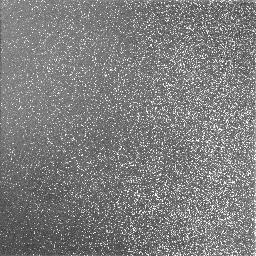
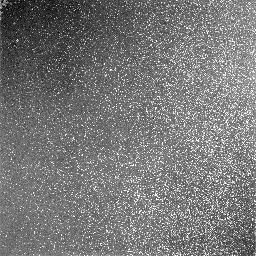
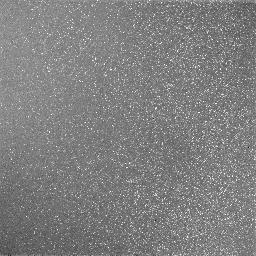
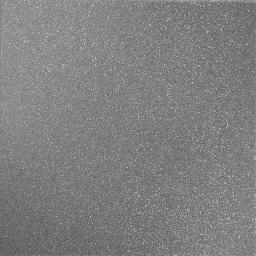
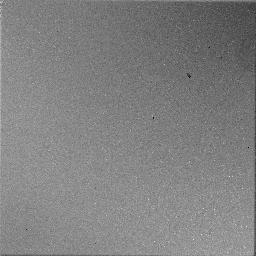
After camera pump-downs in the south, a "speckling" is seen in the
flats of J band that persists for a week or two. The images below, displayed
at -3% to +3% ranges show the differences between the nightly flats and
the Super Grand Canonical flats for period 06a. The respective dates are
990626s, 990704s, 990706s, 990708s, 990714s. At worst the speckles are
at the +XXX% level, but ramp down in a few days.





The outstanding question is how badly these speckles affect photometry when Super Grand Canonicals are used. To investigate this we have reprocessed the final 4 cal sets of 990626s (where the speckle effect is most pronounced) using only the flats from that night and using the SGC 06a flats. We have also taken the flats reduced with the SGC flats and applied the calibration derived from the nightly processing.
First consider the zero points for the two different flats runs. When plotting the derived zero points for the two different flats runs, relatively little difference is seen (overall much less than the scatter in derived zero points from scan to scan):
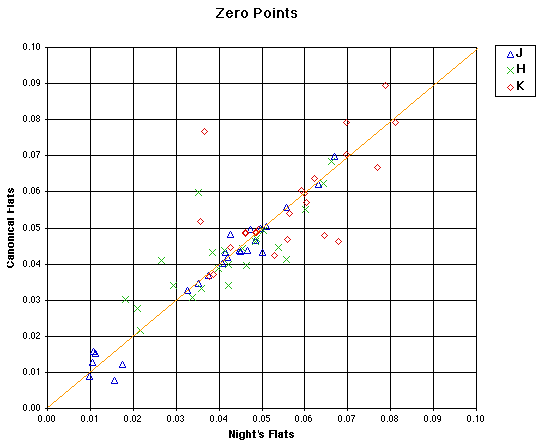
J band, where the speckling primarily exists, shows a very tight corrrelation between the two different flats.
Next we compare the derived photometry for a series of stars in a cal field (808, scan 115) for which the exact same calibration adjustments have been applied. this will highlight any absolute differences in photometry measured between the two different sets of applied flats:
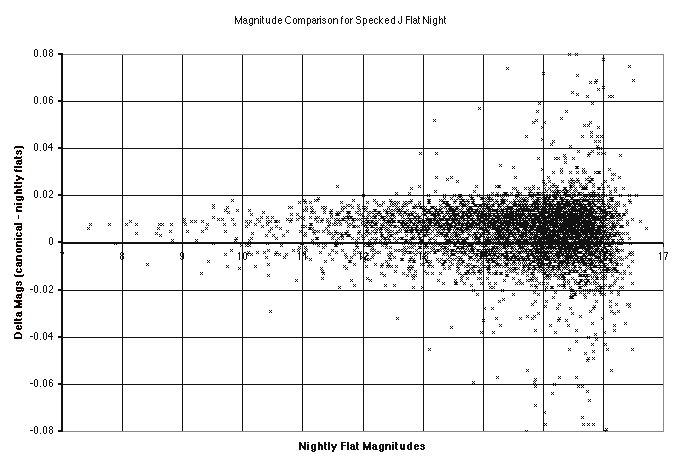
Here we see that there is a systematic offset in the extracted counts between the canonical and nightly flats. This offset is at the 0.01 mag level. Overall this appears to be a tiny difference that is easily calibrated out of the dataset.
To see the real-world differences between the two different flats, we compare the photometry between the stars in the same scan (129) reduced self-consistently using either set of flats (now using cal field 2202):
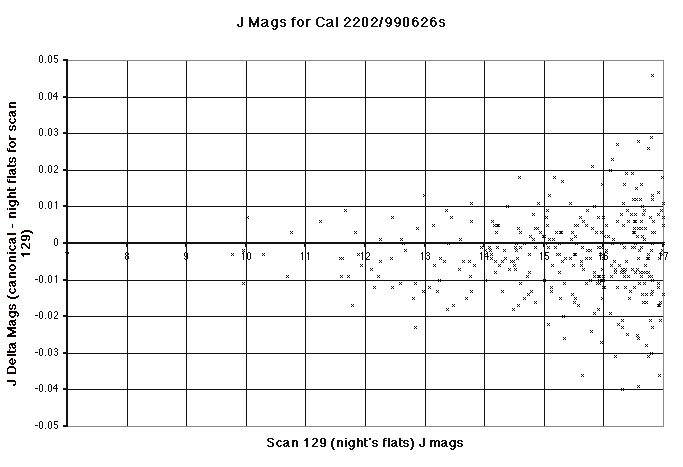
Here the bias appears to have been effectively removed (average/median delta mags are less than 0.005 mag). There is still some induced scatter caused by the different flats characteristics.
As a point of reference we also make a similar comparison for this cal field between two separate cal scans of the same field on a different night (990619s) which had no speckling:
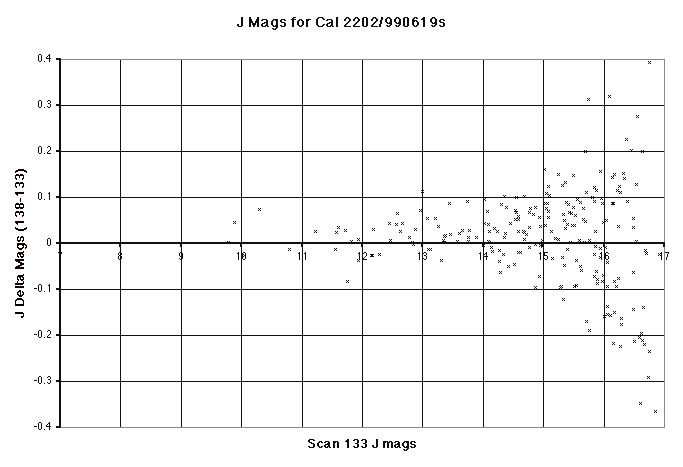
This is representative of "typical" photometric scatter between one cal scan and another. Photometric scatter is an order of magnitude larger here than seen due to differences between the flats used for 990626s.
It appears based on this analysis that using the SGC flats for the entire photometric period should introduce no significant bias or scatter in the source photometry.
Mike Skrutskie wrote:
>
> ...and it appear there was a bug on the window for the
> flat on 990227s
This is a special case. The hardware flats changed on the night
before
this, generating different relative levels in the quadrants, but
the
bugstain wasn't cleared until the next night. Therefore we get
a single
night with new responsivities and with a bugstain. The preceeding
and
following canonical flats will neither be appropriate for this
unique
night.
> ...also speckles appear in the flats again on 990624s.
> They are significant for about a week. Rae was there once
> again, but there is no report in the observer
> logs about pumping out the camera. Maybe the camera
just
> gets uncomfortable when Rae is around...
>
> ...speckles again on 991113s. Once again Rae was there
and
> the camera was pumped that day.
So the question is what do we do about these freckles? They seem
to
indicate long-term variations in pixel responsivity after pump-downs,
but
the change is monotonic and noticible on a timescale of individual
days.
No average will treat these pixels correctly. So I see that we have
four
options (in roughly increasing difficulty):
1) Live with the speckles and just use the canonical flats, accepting
there may be a little photomeric noise introduced by them
2) And "mini-breaks" for these and compute short-term canonicals
spanning
a few days, coming closer to right, but still not really matching
the
changing resps.
3) Simply use the individual flats for those nights without averaging
with
other nights. The flats will be noisier, but we'll capture the
character
of the changing responsivities of these pixels.
4) Rerun pipeline 2-style flats for just these nights. This will
not be
especially close to reality easier and would be most difficult
to
implement from an OPS standpoint.
Strong opinions, anyone?
Robert